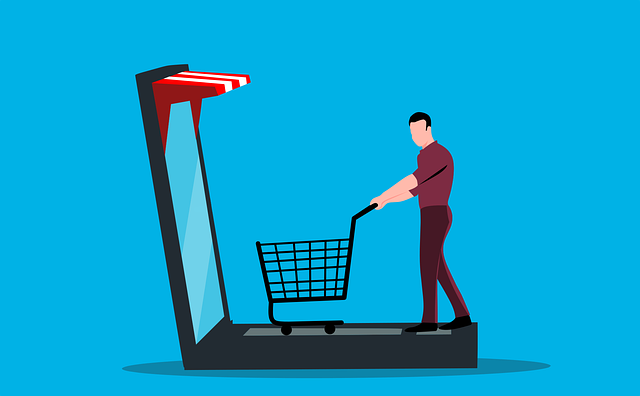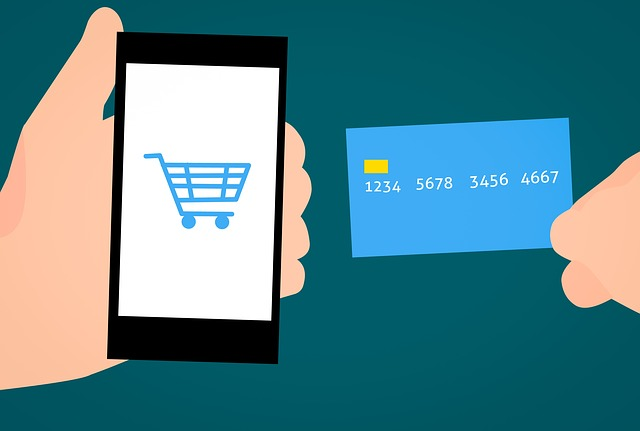We’ll increase conversions by
20-100+%
on your website.
Get a FREE Audit today
See how we can help your business increase conversion rates
Conversion rate optimization
Optimize Checkout Flow

What is Checkout Optimization?
Checkout optimization is the process of improving the checkout experience for customers during online transactions. It involves optimizing the entire checkout process, from the moment a customer adds an item to their cart to the point where they complete the purchase.
The goal of checkout process optimization is to streamline the checkout flow and reduce friction, making it as simple and easy as possible for customers to complete their purchase. This is important because a smooth default checkout process can help reduce cart abandonment rates, improve purchase process and ultimately drive more sales for businesses.
There are several factors that can impact the checkout experience, including the design and layout of the checkout page, the number of steps involved in the checkout process, the availability of payment options, and the transparency of shipping and tax information. By analyzing and optimizing these factors, businesses can create a checkout experience that is both efficient and effective.
Successful optimization of ecommerce checkouts requires a deep understanding of the customer journey, as well as ongoing testing and refinement of the checkout process to ensure that it is meeting the needs and expectations of customers. Overall, checkout optimization is a critical component of e-commerce success and can have a significant impact on a business’s bottom line.

Why is Checkout Optimization Important?
Checkout optimization is important for several reasons, including:
Reducing cart abandonment: One of the biggest challenges in e-commerce is cart abandonment, where customers add items to their cart but don’t complete the purchase. A complicated or time-consuming checkout process can be a major contributor to cart abandonment. By optimizing the checkout steps, businesses can reduce cart abandonment rates and increase sales.
Improving customer experience: A smooth and efficient checkout process can improve the overall customer experience, which can help increase customer satisfaction and loyalty. Customers are more likely to return to a website and make repeat purchases if they have a positive experience.
Increasing conversion rates: A streamlined and user-friendly checkout process can also help increase conversion rates, as it makes it easier for customers to complete their purchase. By optimizing the checkout process, businesses can turn more website visitors into paying customers.
Enhancing brand reputation: A complicated or frustrating checkout process can damage a business’s reputation and reduce customer trust. By providing a seamless checkout experience, businesses can enhance their brand reputation and improve customer loyalty.
Staying competitive: In a crowded e-commerce landscape, businesses need to stay competitive to succeed. Optimizing the checkout process can help businesses stand out from the competition and attract and retain customers.
Overall, checkout optimization is critical for e-commerce success. By providing a seamless and user-friendly checkout experience, businesses can reduce cart abandonment, increase conversion rates, and enhance customer satisfaction and loyalty.

What are Common Checkout Optimization Issues?
Several factors can cause lengthy and complicated checkout processes, including:
Excessive form fields: Checkout forms that require too many fields can be overwhelming and time-consuming for customers. Each form field represents an additional step in the checkout process, which can increase the likelihood of cart abandonment.
Confusing or unclear instructions: Instructions that are unclear or hard to follow can cause confusion and frustration for customers. This can lead to mistakes and additional time spent trying to correct them, further increasing the length of the checkout process.
Technical issues: Technical issues, such as slow loading times or glitches in the checkout process, can cause delays and frustration for customers.
Lack of guest checkout: Requiring customers to create an account before making a purchase can add an extra step to the checkout process, which can be a turnoff for some customers.
Limited payment options: Offering only a limited number of payment options can make the checkout process more complicated for customers who prefer to use a different payment method.
Lack of mobile optimization: With the increasing number of customers shopping on mobile devices, checkout processes that are not optimized for mobile can be difficult to navigate and cause delays.
By addressing these factors and simplifying the online store, businesses can reduce the length and complexity of checkout processes and improve the overall customer experience.

Forced account creation
Forced account creation can cause checkout optimization issues because it adds an extra step to the checkout process that customers may find unnecessary or burdensome. Customers who are required to create an account before making a purchase may feel like their time is being wasted, or they may not want to provide personal information to a website they don’t know or trust.
As a result, customers may abandon their shopping cart and look for an alternative website that offers a guest checkout option. This can result in lost sales and lower conversion rates for businesses.
Forced account creation can also cause other issues, such as:
Increased friction in the checkout process: Requiring customers to create an account adds an extra step to the checkout process, which can create friction and slow down the overall experience.
Increased cart abandonment: Customers who are required to create an account may be more likely to abandon their shopping cart and look for alternative options that offer guest checkout.
Reduced customer satisfaction: Requiring customers to create an account can create a negative customer experience, which can reduce customer satisfaction and harm a business’s reputation.

Hidden fees
Hidden fees can cause checkout optimization issues because they can lead to customer frustration and cart abandonment. Customers expect transparency and honesty when it comes to pricing, and hidden fees can create a negative customer experience that can harm a business’s reputation.
Hidden fees can cause the following checkout optimization issues:
Increased cart abandonment: Customers who are surprised by hidden fees during the checkout process may be more likely to abandon their shopping cart and look for alternative options that offer transparent pricing.
Reduced customer trust: Hidden fees can make customers feel like they have been misled, which can reduce their trust in a business and harm their perception of its brand.
Negative customer reviews: Customers who have a negative experience due to hidden fees may leave negative reviews or spread negative word-of-mouth, which can harm a business’s reputation and future sales.

Lack of payment options
A lack of payment options can cause checkout optimization issues because it limits customers’ ability to pay for their purchases in a way that is convenient for them. Customers expect a variety of payment options, and a lack of options can create a negative experience that can harm a business’s reputation and result in lost sales.
Lack of payment options can cause the following checkout optimization issues:
Increased cart abandonment: Customers who are unable to pay for their purchases in a way that is convenient for them may be more likely to abandon their shopping cart and look for alternative options that offer their preferred payment method.
Reduced customer trust: A lack of payment options can make customers feel like a business is not accommodating their needs or preferences, which can reduce their trust in the business and harm their perception of its brand.
Lost sales: Customers who are unable to pay for their purchases in a way that is convenient for them may choose to shop elsewhere, resulting in lost sales for the business.

Technical issues
Technical issues can cause checkout optimization problems because they can create a negative customer experience that can result in lost sales and harm a business’s reputation. Customers expect a smooth and hassle-free checkout process, and technical issues can create friction and frustration that can lead to cart abandonment.
Technical issues can cause the following checkout optimization problems:
Increased checkout abandonment: Customers who experience technical issues during the checkout process may be more likely to abandon their shopping cart and look for alternative options that offer a smoother experience.
Reduced customer satisfaction: Technical issues can create a negative customer experience that can harm customer satisfaction and lead to negative word-of-mouth.
Lost sales: Customers who experience technical issues may choose to shop elsewhere, resulting in lost sales for the business.

What are the Best Practices for Checkout Optimization?
Simplify the checkout process
Simplifying the checkout process can improve checkout optimization in several ways. A simplified checkout process can reduce friction, improve customer satisfaction, and increase the likelihood of completing a purchase. Here are some ways in which simplifying the checkout process can improve checkout optimization:
Reduce cart abandonment: A lengthy and complicated checkout process can increase cart abandonment rates. Simplifying the checkout process by reducing the number of steps or information required can make it easier for customers to complete their purchase, reducing cart abandonment rates.
Improve customer satisfaction: A simplified checkout process can improve customer satisfaction by reducing the time and effort required to complete a purchase. Customers are more likely to return to a business that offers a smooth and hassle-free checkout experience.
Increase conversion rates: A simplified checkout process can increase conversion rates by making it easier and more convenient for customers to complete their purchase. By reducing friction and making the process simple, businesses can increase the likelihood of customers completing their purchase.
To simplify the Mobile Checkout, businesses can:
-
Reduce the number of steps required to complete a purchase.
-
Minimize the amount of information required from customers.
-
Offer guest checkout options to avoid forcing customers to create an account.
-
Provide clear and concise instructions and guidance optimizing single page checkout flow.
-
Ensure that the checkout process is optimized for different devices and browsers.
By simplifying the checkout process, businesses can create a positive customer experience that improves checkout optimization, increases customer satisfaction, and results in higher conversion rates.

Offer guest checkout
Offering guest checkout can improve checkout optimization in several ways. Guest checkout allows customers to complete their purchase without having to create an account or provide personal information, making the checkout process faster and easier. Here are some ways in which offering guest checkout can improve checkout optimization:
Reduce cart abandonment: Requiring customers to create an account can be a significant barrier to completing a purchase. Offering guest checkout can reduce cart abandonment rates by making the checkout process faster and easier.
Improve customer satisfaction: Guest checkout can improve customer satisfaction by offering a convenient and hassle-free checkout experience. Customers appreciate the option to complete their purchase without having to create an account or provide personal information.
Increase conversion rates: Guest checkout can increase conversion rates by removing a significant barrier to completing a purchase. By making the checkout process faster and easier, businesses can increase the likelihood of customers completing their purchase.
To offer guest checkout, businesses can:
-
Provide a clear and prominent option for guest checkout.
-
Ensure that the guest checkout process is easy to use and does not require excessive information from the customer.
-
Allow customers to easily access their order details and status without having to create an account.
-
Offer incentives for customers to create an account, such as discounts or exclusive offers.
By offering guest checkout, businesses can create a positive customer experience that improves checkout optimization, increases customer satisfaction, and results in higher conversion rates.

Be transparent about fees and shipping costs
Being transparent about fees and shipping costs can improve checkout optimization by building trust with customers and reducing cart abandonment rates. Hidden fees and unexpected shipping costs can create friction during the checkout process, causing customers to abandon their cart and look for alternative options. Here are some ways in which being transparent about fees and shipping costs can improve checkout optimization:
Reduce cart abandonment: Hidden fees and unexpected shipping costs can be a significant barrier to completing a purchase. Being transparent about fees and shipping costs can reduce cart abandonment rates by providing customers with accurate and upfront information about the total cost of their purchase.
Build trust with customers: Transparency builds trust with customers by showing that a business values honesty and fairness. By being transparent about fees and shipping costs, businesses can improve their reputation and build customer loyalty.
Improve customer satisfaction: Customers appreciate transparency and honesty during the checkout process. By providing accurate and upfront information about fees and shipping costs, businesses can improve customer satisfaction and create a positive customer experience.
To be transparent about fees and shipping costs, businesses can:
-
Clearly display the total cost of the purchase, including all fees and shipping costs, before the checkout process begins.
-
Provide detailed information about fees and shipping costs in the product description or on the checkout page.
-
Clearly communicate any restrictions or exclusions that may affect the total cost of the purchase.
-
Provide multiple shipping options with clear delivery timeframes and costs.
By being transparent about fees and shipping costs, businesses can create a positive customer experience that improves checkout optimization, increases customer satisfaction, and results in higher conversion rates.

Provide multiple payment options
Providing multiple payment details can improve checkout optimization in several ways. Different customers have different preferences when it comes to payment methods, and providing a variety of payment options can make it easier for customers to complete their purchase. Here are some ways in which providing multiple payment options can improve checkout optimization:
Reduce cart abandonment: If a customer’s preferred payment method is not available, they may abandon their cart and look for an alternative option. Providing multiple payment options can reduce cart abandonment rates by giving customers a range of choices.
Increase customer satisfaction: Customers appreciate having a variety of payment options to choose from. By providing multiple payment options, businesses can improve customer satisfaction and create a positive customer experience.
Improve conversion rates: By offering a variety of payment options, businesses can increase the likelihood of customers completing their purchase. Customers are more likely to complete their purchase if they can use their preferred payment method.
To provide multiple payment options, businesses can:
-
Offer a variety of payment options, including credit/debit cards, PayPal, Apple Pay, Google Pay, and other popular payment methods.
-
Clearly display the available payment options and any restrictions or exclusions that may apply.
-
Ensure that the checkout process is optimized for each payment method.
-
Offer incentives for customers to use specific payment methods, such as discounts or cashback offers.
By providing multiple payment options, businesses can create a positive customer experience that improves checkout optimization, increases customer satisfaction, and results in higher conversion rates.

Ensure mobile-friendly checkout pages
Ensuring a mobile-friendly checkout can improve checkout optimization by making the checkout process easier and more convenient for customers who prefer to shop on their mobile devices. With the rise of mobile shopping, it’s important for businesses to optimize their checkout process for mobile users. Here are some ways in which ensuring a mobile-friendly checkout can improve checkout optimization:
Increase accessibility: A mobile-friendly checkout makes it easier for customers to complete their purchase on their mobile devices and complete checkout. This can increase accessibility and convenience for customers who prefer to shop on their mobile devices.
Reduce cart abandonment: A mobile-unfriendly checkout can be frustrating and difficult to navigate, leading to cart abandonment. Ensuring a mobile-friendly checkout can reduce cart abandonment rates and increase conversion rates.
Improve customer satisfaction: A mobile-friendly checkout can improve customer satisfaction by providing a convenient and seamless checkout experience. Customers appreciate businesses that cater to their mobile shopping habits and make the checkout process easy and convenient.
To ensure a mobile-friendly checkout, businesses can:
-
Use responsive design to optimize their ecommerce checkout for mobile devices.
-
Use mobile-friendly payment options and ensure that the ecommerce checkout is optimized for each payment method.
-
Minimize the number of steps required to complete the ecommerce checkout.
-
Use large and easy-to-click buttons, and ensure that the ecommerce checkout is easy to navigate on a small screen.
By ensuring a mobile-friendly ecommerce checkout process, businesses can create a positive customer experience that improves checkout optimization, increases customer satisfaction, and results in higher conversion rates.

Use clear and prominent calls-to-action
Using clear and prominent calls-to-action (CTAs) can improve checkout optimization by guiding customers through the ecommerce site and making it easier for them to complete their purchase. CTAs prompt customers to take specific actions, such as adding items to their cart, entering shipping information, and completing their purchase. Here are some ways in which using clear and prominent CTAs can improve checkout optimization:
Reduce confusion: Clear and prominent CTAs can reduce confusion and uncertainty for customers, guiding them through the checkout process and making it clear what action they need to take next.
Increase engagement: CTAs can increase engagement and encourage customers to take action. By using clear and prominent CTAs, businesses can increase the likelihood that customers will complete their purchase.
Improve conversion rates: CTAs can improve conversion rates by prompting customers to take action and complete their purchase. By using clear and prominent CTAs, businesses can increase the likelihood that customers will complete their purchase.
To use clear and prominent CTAs, businesses can:
-
Use clear and concise language that communicates the action the customer needs to take.
-
Use contrasting colors and bold typography to make CTAs stand out on the page.
-
Place CTAs in prominent locations throughout the ecommerce site, such as at the top of the page or next to key information fields.
-
Use descriptive and action-oriented language that communicates the value of completing the action.
By using clear and prominent CTAs, businesses can create a positive customer experience that improves checkout optimization, increases customer satisfaction, and results in higher conversion rates.

Test and improve checkout page regularly
Regularly testing and optimizing the checkout page can improve checkout optimization by identifying and fixing issues, improving customer experience, and increasing conversion rates. Here are some ways in which testing and optimizing the checkout process can improve checkout optimization:
Identify issues: Regular testing and optimization can help identify issues with the checkout process, such as technical glitches, confusing design, or slow loading times.
Improve customer experience: Regularly testing and optimizing the checkout page can help businesses understand how customers are interacting with the checkout process and identify areas where improvements can be made to improve customer experience.
Increase conversion rates: By identifying and fixing issues and improving customer experience, businesses can increase conversion rates and improve checkout optimization.
To test and optimize the checkout process, businesses can:
-
Use analytics tools to track customer behavior and identify issues with the checkout process.
-
Conduct A/B testing to compare different versions of the checkout page and identify which version performs better.
-
Solicit feedback from customers to understand their experience with the checkout page and identify areas for improvement.
-
Regularly review and update the checkout process to ensure that it is optimized for customer experience and conversion rates.
By regularly testing and optimizing the checkout process, businesses can create a positive customer experience that improves checkout optimization, increases customer satisfaction, and results in higher conversion rates. Alternately, businesses can use a conversion rate optimization service to help with this process.

The importance of checkout optimization
Checkout optimization is a crucial aspect of any e-commerce business, as it directly impacts conversion rates and revenue. Lengthy and complicated checkout processes, forced account creation, hidden fees, lack of payment options, technical issues, and other factors can all contribute to a poor checkout experience for customers.
By simplifying the online store, offering guest checkout, being transparent about fees and shipping costs, providing multiple payment options, ensuring a mobile-friendly checkout, using clear calls-to-action, and regularly testing and optimizing the checkout, businesses can improve customer experience, increase conversion rates, and drive more revenue.
Ultimately, checkout optimization is essential for businesses looking to stay competitive in the e-commerce industry and provide the best possible experience for their customers.

Best practices for optimizing checkout flow
In summary, optimizing checkout is crucial for any e-commerce business looking to increase conversion rates and revenue. Some best practices to improve the checkout experience for customers include simplifying the checkout process, offering guest checkout, being transparent about fees and shipping costs, providing multiple payment options, ensuring a mobile-friendly checkout, using clear calls-to-action, and regularly testing and checkout process optimization.
It’s important for businesses to put themselves in their customers’ shoes and consider how the checkout process might feel from their perspective. By reducing friction and making the checkout process as easy as possible, businesses can improve customer satisfaction and increase their chances of repeat business.
Checkout process optimization is an ongoing process, and businesses should continually test and optimize their checkout to ensure that it’s meeting the needs of their customers. By making checkout optimization a priority, businesses can stay competitive in the e-commerce industry and provide the best possible experience for their customers.
Call to action for businesses to prioritize checkout optimization
In today’s highly competitive e-commerce landscape, businesses cannot afford to overlook the importance of checkout optimization. The checkout process is a critical part of the customer journey, and businesses that prioritize checkout optimization are better positioned to improve conversion rates, increase revenue, and build customer loyalty.
By implementing best practices such as simplifying the ecommerce checkout page, offering guest checkout, being transparent about fees and shipping costs, providing multiple payment options, ensuring a mobile-friendly checkout, and regularly testing and optimizing the checkout, businesses can provide their customers with a seamless and enjoyable shopping experience.
In order to stay ahead of the competition and succeed in today’s e-commerce industry, businesses must prioritize checkout optimization as a key part of their overall strategy.








